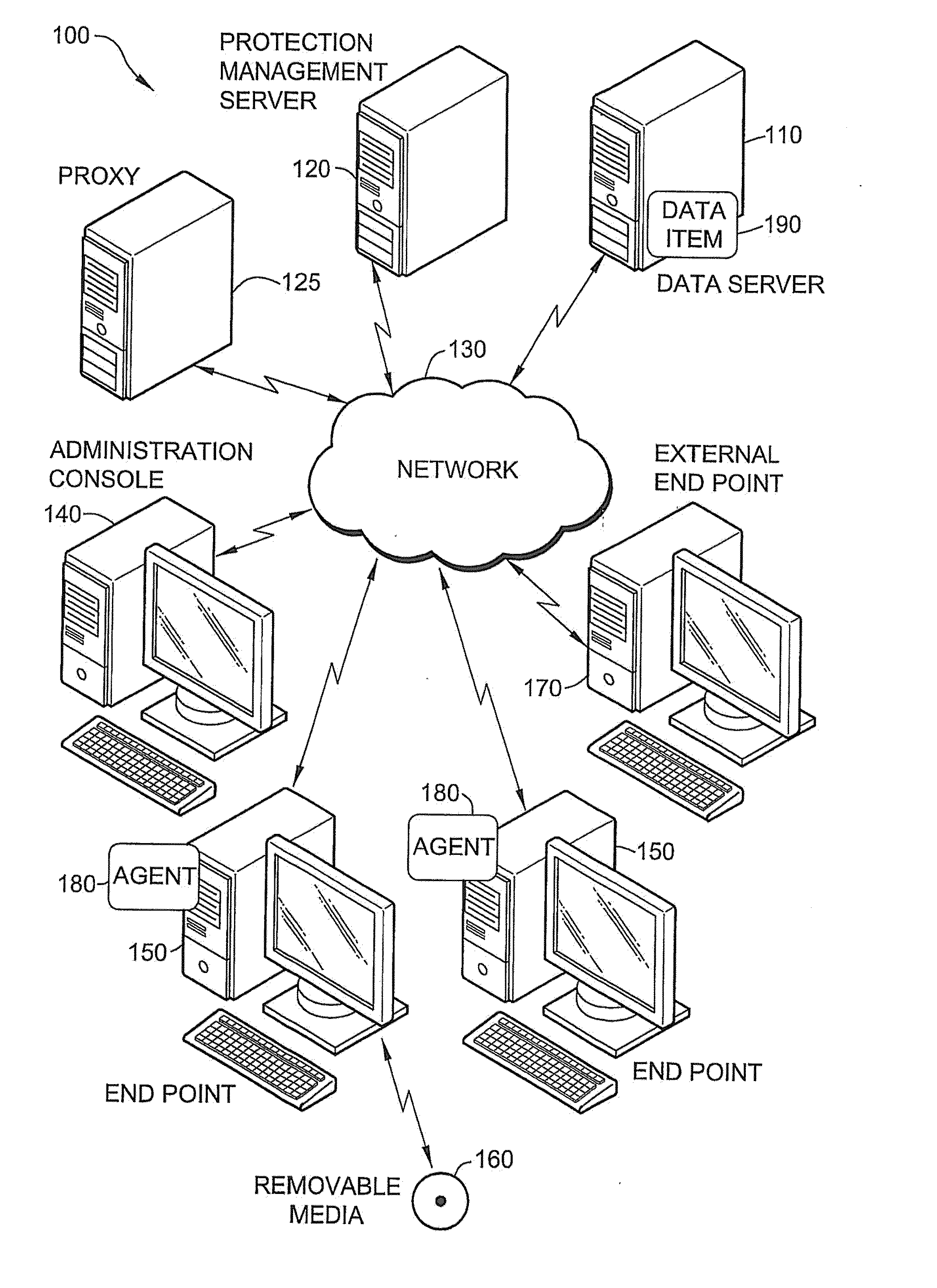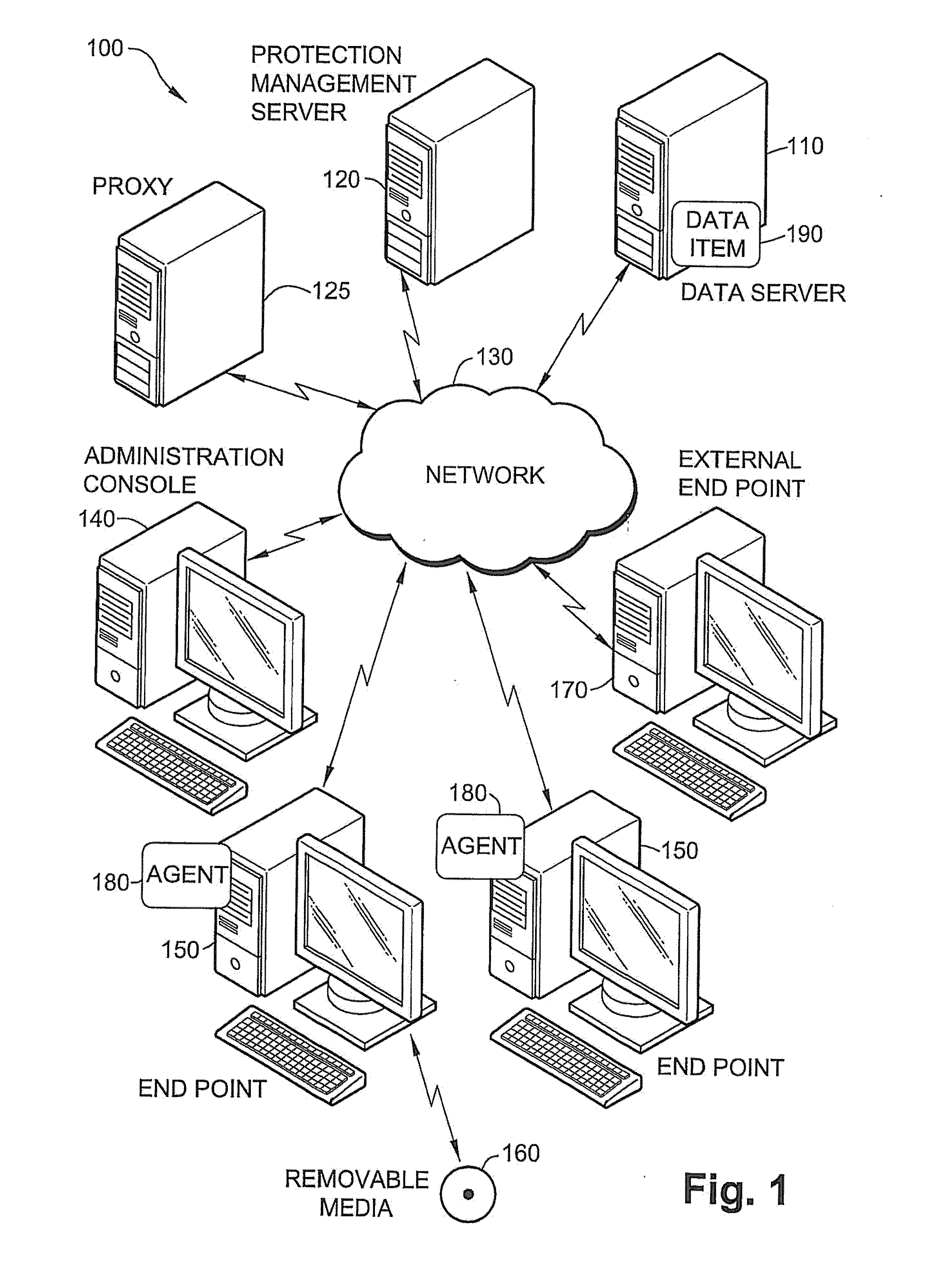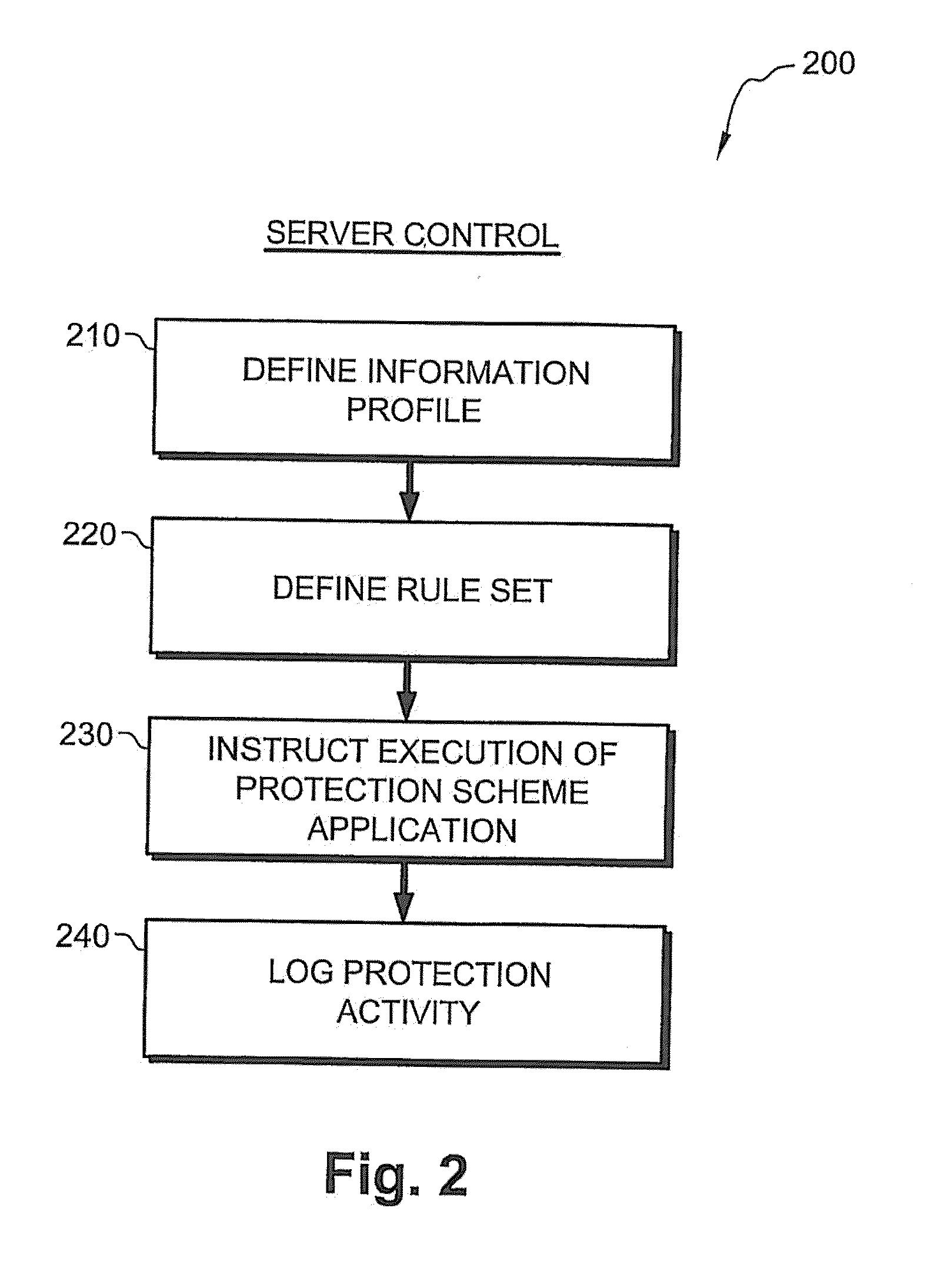System and method for automatic data protection in a computer network
a technology of automatic protection and computer network, applied in the field of system and method for automatically protecting data in a computer network, can solve the problems of information leakage either deliberately or accidentally, limited in its ability to enforce a policy, and agents may be circumvented, so as to prevent unauthorized duplication of content and verify integrity
- Summary
- Abstract
- Description
- Claims
- Application Information
AI Technical Summary
Benefits of technology
Problems solved by technology
Method used
Image
Examples
Embodiment Construction
[0040]FIG. 1 is a schematic illustration of a system 100 for automatic data protection in a computer network, according to an exemplary embodiment of the invention. In an exemplary embodiment of the invention, system 100 is implemented on the computational resources of an organization. Optionally, the organization may be a small office with a single endpoint or an enterprise company with multiple physical locations connected together by a network 130. Some endpoints are connected by a local area network or other types of networks and are controlled by the organization, and some endpoints may be connected via a wide area network, which is not controlled by the organization (e.g. the Internet). In an exemplary embodiment of the invention, the computational resources of the organization may include one or more endpoints 150 for the employees of the organization to work on. Additionally, system 100 may include a data server 110, which stores data items 190 and serves as a server for end...
PUM
 Login to View More
Login to View More Abstract
Description
Claims
Application Information
 Login to View More
Login to View More - R&D
- Intellectual Property
- Life Sciences
- Materials
- Tech Scout
- Unparalleled Data Quality
- Higher Quality Content
- 60% Fewer Hallucinations
Browse by: Latest US Patents, China's latest patents, Technical Efficacy Thesaurus, Application Domain, Technology Topic, Popular Technical Reports.
© 2025 PatSnap. All rights reserved.Legal|Privacy policy|Modern Slavery Act Transparency Statement|Sitemap|About US| Contact US: help@patsnap.com



